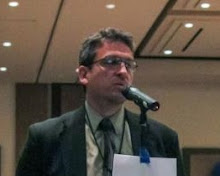Yes, we can have a conversation about gun violence.
But not one based on lies.
And definitely not one where the only outcome you will accept is the gun confiscation you really want but which you refuse to admit.
There is NO "compromise" on banning guns. Modern gun control hysteria seeks ONE thing and one thing only: complete confiscation. Registration is not confiscation, true enough. It is, however, the beginning of a database of gun owners, so the next administration has a list of homes to break into when confiscation does come.
You know this.
You know it from history, both in the US and abroad.
You know this.
You know it from history, both in the US and abroad.
Don't pretend you don't know it, because when you start a conversation with that kind of basic dishonesty, everyone can see right through it.
You're just going to have to be up-front and admit it: Your goal is to use gun registration as a preliminary step to CONFISCATION.
You are also aware that a "compromise" is where the sides all give up something.
But that's not what you're after, is it?
You want gun owners to give up their property and leave their homes vulnerable to every thug that comes along -- all while you give them NOTHING in return.
You want gun owners to give up their property and leave their homes vulnerable to every thug that comes along -- all while you give them NOTHING in return.
That's not a compromise.
How about this for a compromise:
Gun owner registration. Add a code to state driver's licenses indicating that person is qualified to be a gun owner. You can even keep your silly training requirements. The state already knows who 95% of gun owners are, anyway, through the forms people fill out during gun purchases.
If that person then commits a crime, then the code-enabled driver's license must be turned in and a new one issued without it, until that person has earned all of his rights back.
If that person then commits a crime, then the code-enabled driver's license must be turned in and a new one issued without it, until that person has earned all of his rights back.
In exchange: 1) The code serves as a concealed permit (no additional permit required). 2) full and absolute recognition of carry permits in all 50 states plus any territories with a zip code ("full faith and credit"); and 3) the abolition of all federal agencies and laws regulating guns, including full-auto and sawed-off firearms.
Now there is a compromise. You get something, and we get something.
------------------------------------------------------------
Written by Marc Montoni <AMCAmbassador@gmail.com>, for the
Libertarian Party Radical Caucus. May, 2018. This work is licensed under a Creative Commons Attribution-NonCommercial-ShareAlike 4.0 International License.
------------------------------------------------------------
For more information about the Radical Caucus, see www.LPRadicalCaucus.org or see the Facebook group https://www.facebook.com/groups/2497146127/ .
------------------------------------------------------------
For more information about the Radical Caucus, see www.LPRadicalCaucus.org or see the Facebook group https://www.facebook.com/groups/2497146127/ .
------------------------------------------------------------





